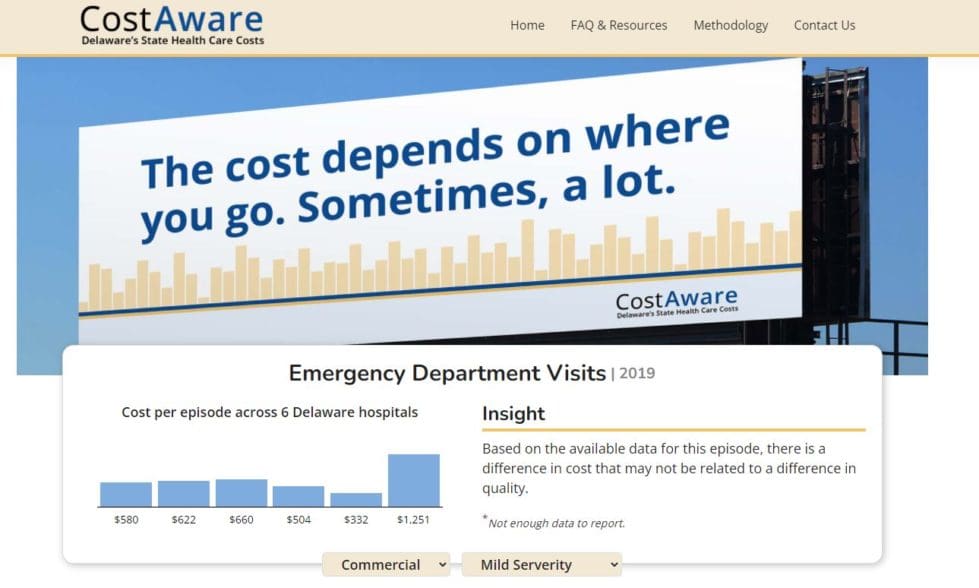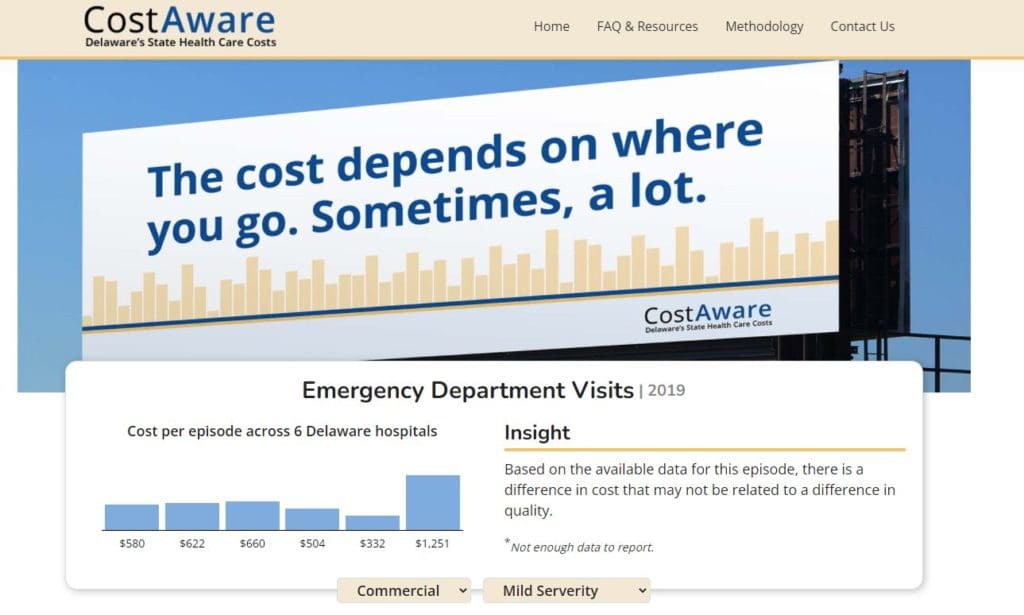A new state website compares the average costs for different kinds of services at Delaware hospitals, based on actual medical claims.
But don’t get too excited about the comparisons on CostAware.
None of the information is tagged to a specific hospital, although in a few cases, it’s easy to guess which institution the information came from.
Without any IDs, it’s hard for the average consumers to use the data to make decisions in their own lives.
Molly Magarik, secretary of the Department of Health and Social Services, said in a press release she hopes that information will be included in future versions of the website.
That’s not mentioned on the brand-new site unveiled Thursday.
In a Frequently Asked Questions section, one question asks, “Why can’t I see the names of hospitals or providers?” The answer said the point of the initial version is to increase transparency in the performance of the state health care system.
“It is anticipated that future versions of CostAware will include more detailed cost, utilization and quality information,” it says, but does not include revealing hospital names. The site also says it hopes to include hospitals in neighboring states.
Created by the Department of Health and Social Services and Delaware Health Care Commission, CostAware compares costs for five kinds of care at six state hospital systems: cardiac procedures, C-section birth, emergency department visits, knee and hip replacement, and vaginal delivery.
CostAware also shows info about the costs of a basic blood test, colonoscopy, doctor visits, hemoglobin A1c, head CT, lumbar spine MRI and screening mammography gleaned from five accountable care organizations. Those are groups of doctors, hospitals, and other health care providers who ban together, usually by institutional affiliation, to create right time, right place services that can earn them more Medicare bucks.
The rates on the site are based on 2019 medical claims in the Delaware Health Care Claims Database and reflect the cost that consumers and their insurers actually paid for the care.
The site includes readmission and utilization rates, as well as patient satisfaction scores, from the Centers for Medicare and Medicaid Services.
Each episode of care and service can be filtered further by the type of insurance: commercial, Medicare Advantage and Medicaid.
“This kind of transparency and public awareness of health care spending is important for everyone in the system – consumers, health care providers, taxpayers, insurers and businesses,” Magarik said in the press release. “We all want good value for the health care dollars we do spend. CostAware offers a glimpse into the actual costs that Delawareans and their insurers are paying, and the quality measures associated with that care.”
The site also breaks down the average monthly cost of care for each member of an accountable care organization and the top procedures for several age and gender groups based on overall volume and dollar volume.
Work on comparing costs because in early 2020, when DHSS and the Delaware Health Care Commission began working with the Delaware Health Information Network to develop and implement various health care cost and quality analyses.
CostAware is the result of goals from that partnership that include expanding the claims database analysis, measurement and reporting capabilities to increase transparency; highlighting variation in health care system performance; adding to consumers’ knowledge base; and identifying opportunities to improve quality and reduce costs for Delaware residents.
Slowing the growth of health care spending was a goal for Gov. John Carney, whose Executive Order 25, established a controversial state health care spending benchmark. That is a percentage of previous expenses that the state wants to keep the next year’s costs under.
The first spending benchmark went into effect on Jan. 1, 2019, and was set at 3.8% over the previous years expenditures. The target was expected to decrease gradually to 3% over the following three years.
The first benchmark report measured the growth rate at 7.8% for 2019, or more than twice the 3.8% target.
Share this Post




